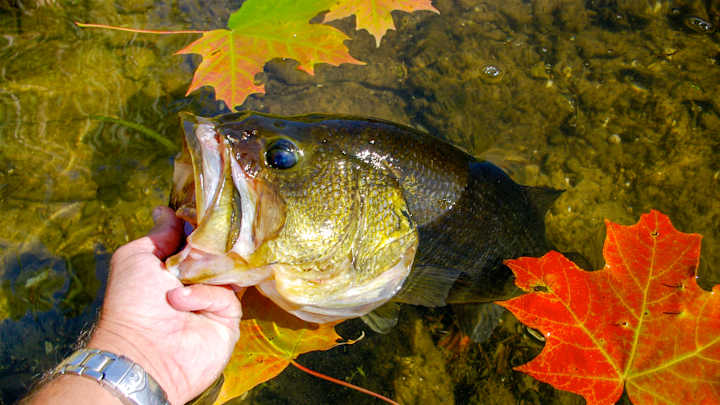When autumn temperatures drop, strategy becomes paramount for anglers chasing largemouth bass. From using bigger lures to timing topwater action during warm fronts, these five tips from Si show how to boost your fall catch.
5 Tips to Help You Find and Catch More Largemouth Bass This Fall

Key Takeaways:
- Big Lures can attract larger, more aggressive bass.
- Healthy Green Weeds serve as vital habitats for baitfish and bass.
- Deep Rock and Wood provide essential cover without the warmth of summer.
- Following Bait fish movements helps anglers locate feeding bass.
- Warm Front Topwaters turn brief mild spells into a prime fishing window.
Introduction
Fall bass fishing presents unique opportunities for anglers willing to adapt their gear and methods. As water temperatures cool, largemouth bass will feed actively, but can also become selective about where they spend their energy. This guide highlights five actionable tips to help anglers land more fish in the autumn season.
Big Lures
One of the core points from Si’s fall strategy hinges on using big lures. Larger presentations can trigger bites from bass feeding aggressively before winter sets in. While it might seem counterintuitive when temperatures dip, big lures can often tempt bigger fish looking for a substantial meal.
Green Weeds
Although much of a lake’s vegetation starts dying off in cooler weather, pockets of green weeds remain excellent bass magnets. Healthy weed beds attract baitfish, and where there’s prey, you’ll find predators. By focusing on these remaining patches of green, anglers can increase their odds of hooking bass in relatively shallow water.
Deep Rock and Wood
As the season progresses, bass frequently shift to deeper structure. Reefs, drop-offs, submerged timber, and rocky points all become prime locations. These elements provide cover and consistent temperatures, making them reliable spots to find fall bass. Spend extra time scanning for rock piles or sunken wood to pinpoint where fish are holding.
Following the Bait
Baitfish movement often dictates where the action is. Bass tend to follow schools of minnows or shad, positioning themselves to feed more efficiently. Keep an eye on any visible surface activity or use electronics to track these baitfish. Once you locate a school, approach carefully and fish the edges where bass typically lurk.
Warm Front Topwaters
In cooler months, topwater fishing might seem less effective. However, Si notes that brief warm fronts occasionally sweep in, creating a window where surface lures shine. During these temporary temperature spikes, breaking out your favorite topwater plug can produce explosive strikes from bass unwilling to miss a fleeting opportunity.
Conclusion
Fall can be one of the most rewarding times to fish for largemouth bass, provided you embrace the right tactics. Bigger lures, healthy weeds, deep structure, following the bait, and watching for those momentary warm spells can all boost your catch rate. With these five pointers, anglers can make the most of the autumn season and enjoy the thrill of hooking into more—and often bigger—bass.











